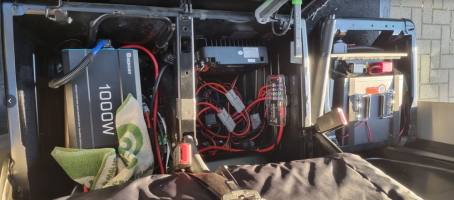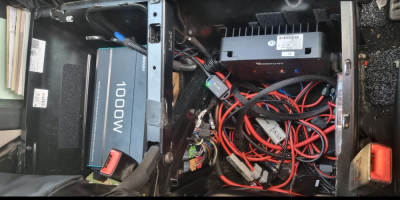Hi
I’m wanting to mount the Renogy 1000w inverter under drivers seat, and connect to the 160ah lithium which will be under passenger seat, Renogy sell a 5ft inverter/battery cable, so just want to confirm this will be ok?
They even sell an 8 ft one so I’m hoping the distance between my swivel seats, battery- inverter is acceptable.
The most powerful item to plug into this inverter is 500w and then just a few minutes.
I don’t want to move the B2B, the 240v and solar charger, which will be under passenger seat next to battery.
Cheers
I’m wanting to mount the Renogy 1000w inverter under drivers seat, and connect to the 160ah lithium which will be under passenger seat, Renogy sell a 5ft inverter/battery cable, so just want to confirm this will be ok?
They even sell an 8 ft one so I’m hoping the distance between my swivel seats, battery- inverter is acceptable.
The most powerful item to plug into this inverter is 500w and then just a few minutes.
I don’t want to move the B2B, the 240v and solar charger, which will be under passenger seat next to battery.
Cheers

Last edited:



